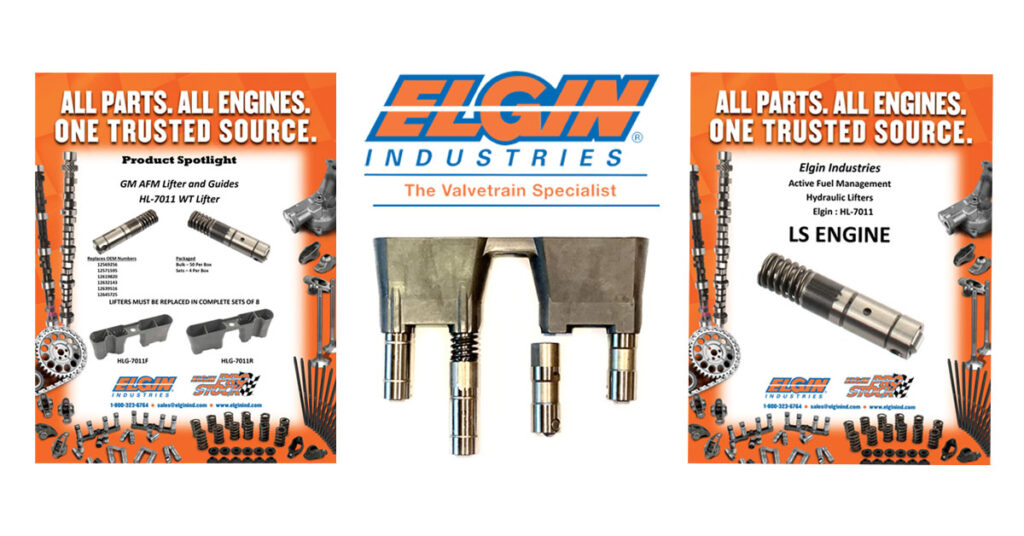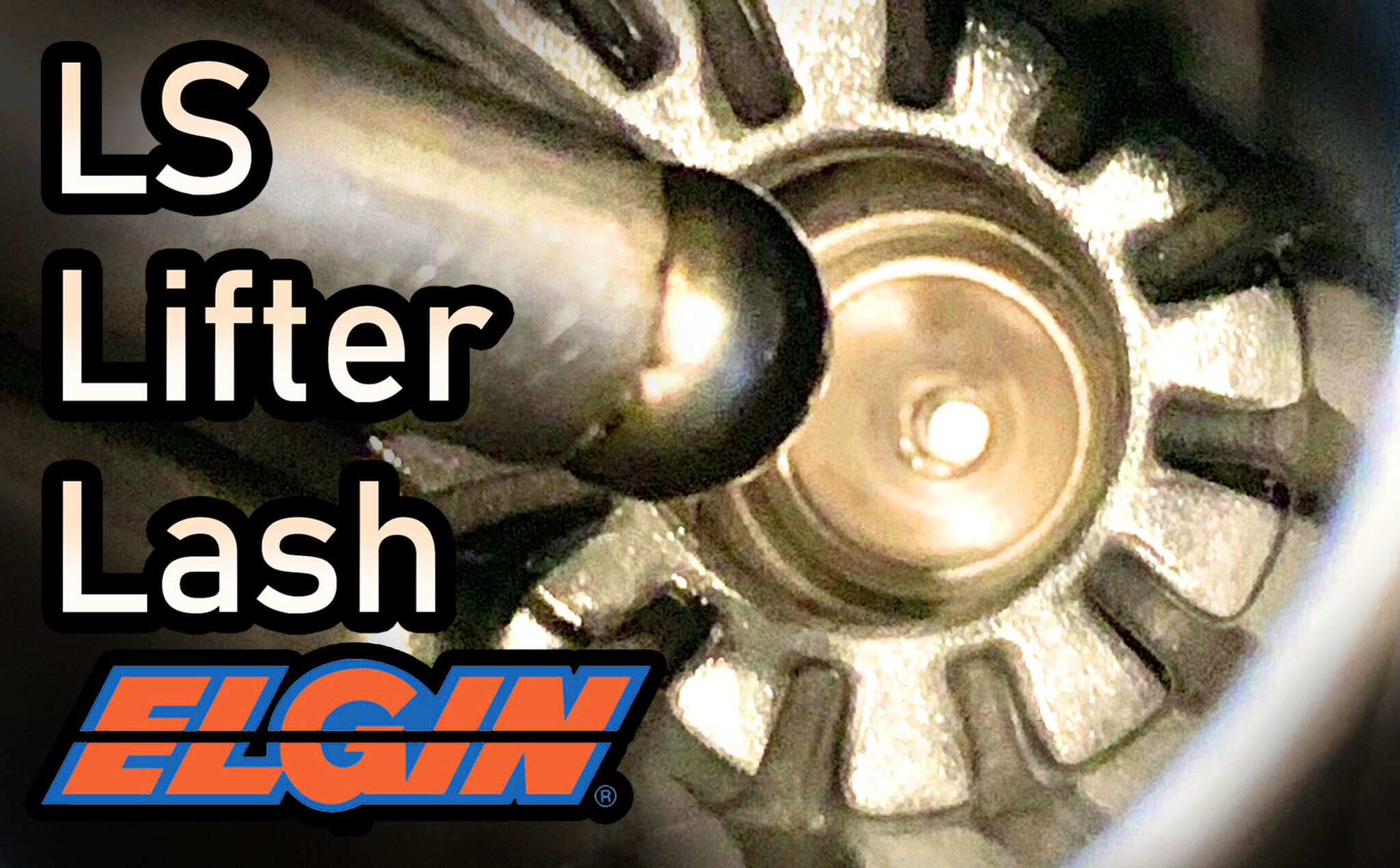Elgin LS7 Lifters
The Elgin LS lifters are made in the USA to meet or exceed OE specifications. All current supply offered to the aftermarket by Elgin will replace earlier versions dating back to the Gen II pre-Vortec Era, and all the way through newer Gen IV AFM engines.
These lifters are consistently lasting over a quarter million miles, and are still susceptible to collateral damage from other engine failures. Lifter noise, either ticking or clattering, is often the result of oiling issues.
In this article we will also explore other common causes for lifter clicking, clacking, or noises.
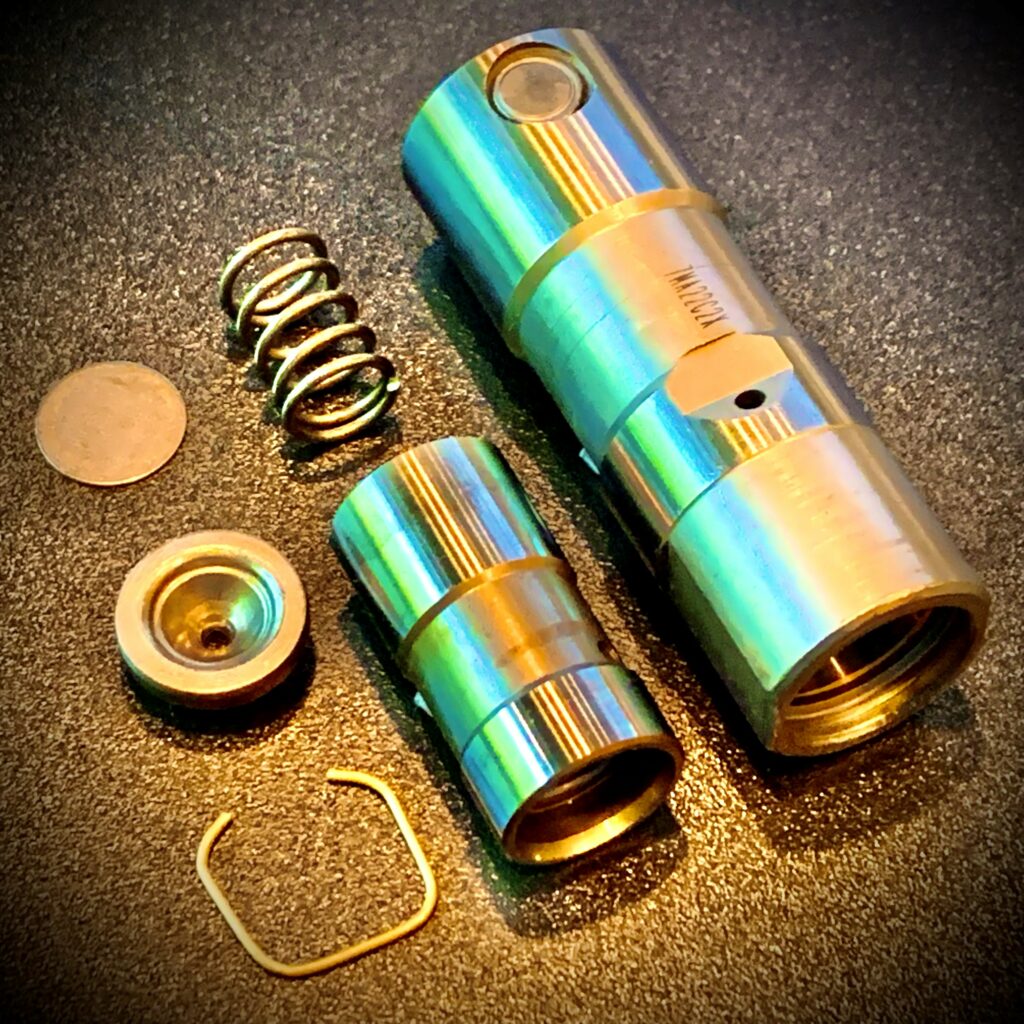
Installation error
The lifter oil feed hole is offered in multiple orientations. Both styles of lifters are functionally identical, and can be interchanged within the same engine.
The lifters should always be installed so that some oil will remain inside the lifter body after the engine is turned-off. If the lifter does not have any oil upon engine start-up, then the lifter will clatter until it is filled with oil pressure.
If the oil feed hole is positioned down (toward the exhaust), then the oil may bleed out of the lifter. These should be installed with the lifter positioned up (toward intake manifold) to retain some oil.
Most of the Elgin supply in the early 2020’s has had the oil hole positioned on the side, so that some oil will always be retained.
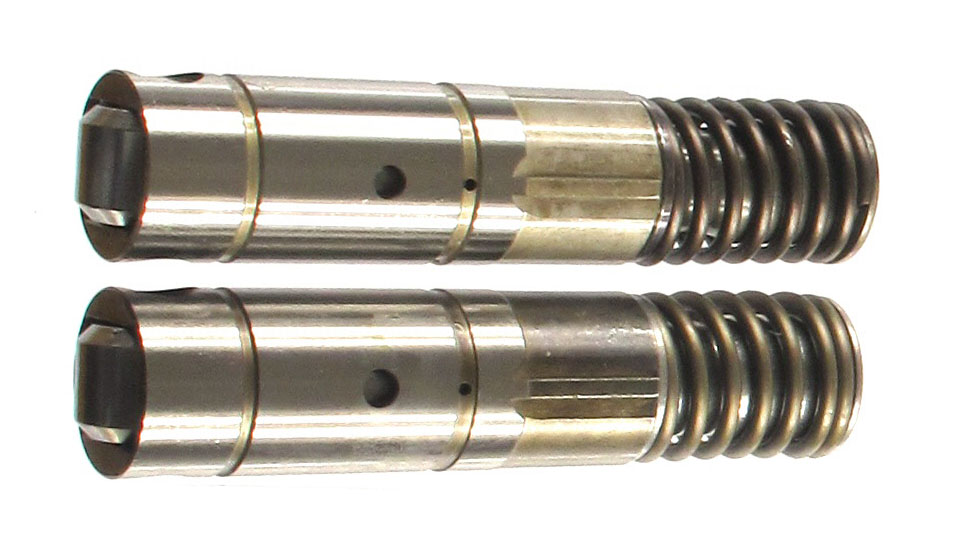
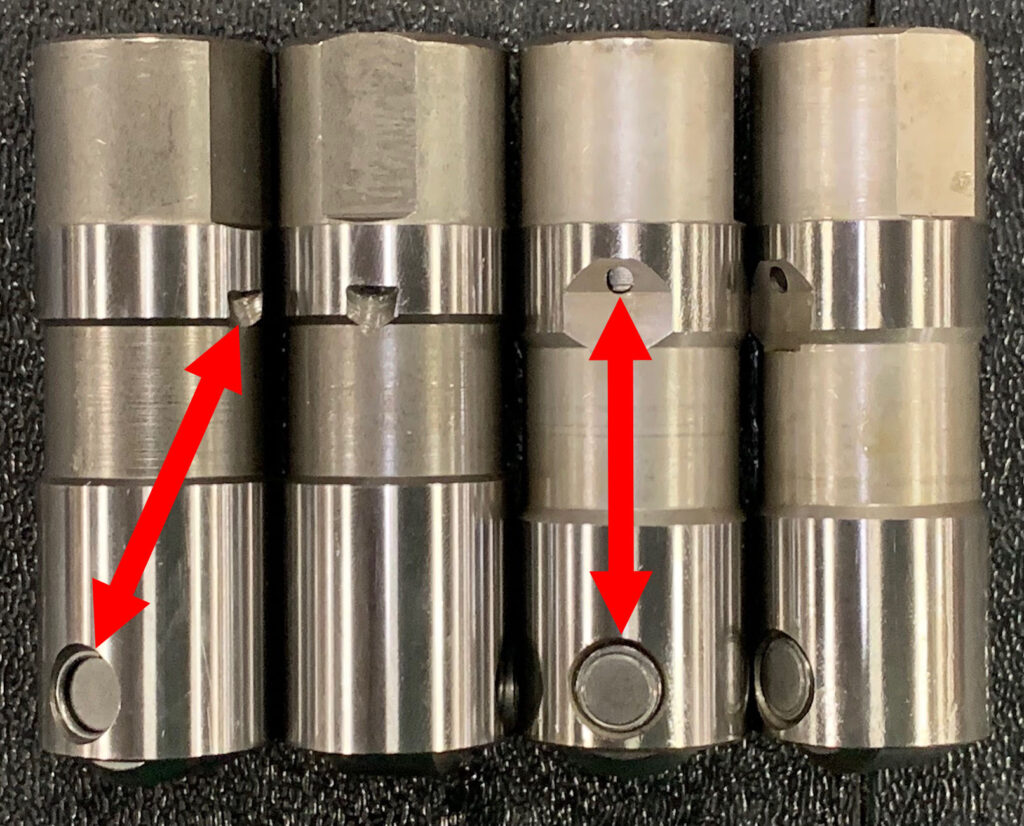
LS Lifter oiling issues
LS engines are easily reaching 250,000 miles in their original vehicle, then are commonly repurposed for LS swap vehicles.
Previous owners’ maintenance schedules may have been less than adequate, allowing sludge deposits to accumulate in the oil galleys, and the lifters themselves.
Sludge inside the lifter may cause the plunger to stick and tick on start-up until the engine is warm.
Along with poor oil change schedules, bearings and other mating components may have their tolerances worn beyond expected lifespan. Oil loss will occur from wide tolerances, which may starve lifters from necessary oil supply, causing them to make noise.
Occasionally the oil pump may be worn and not able to keep all the galleys evenly full of lubrication.
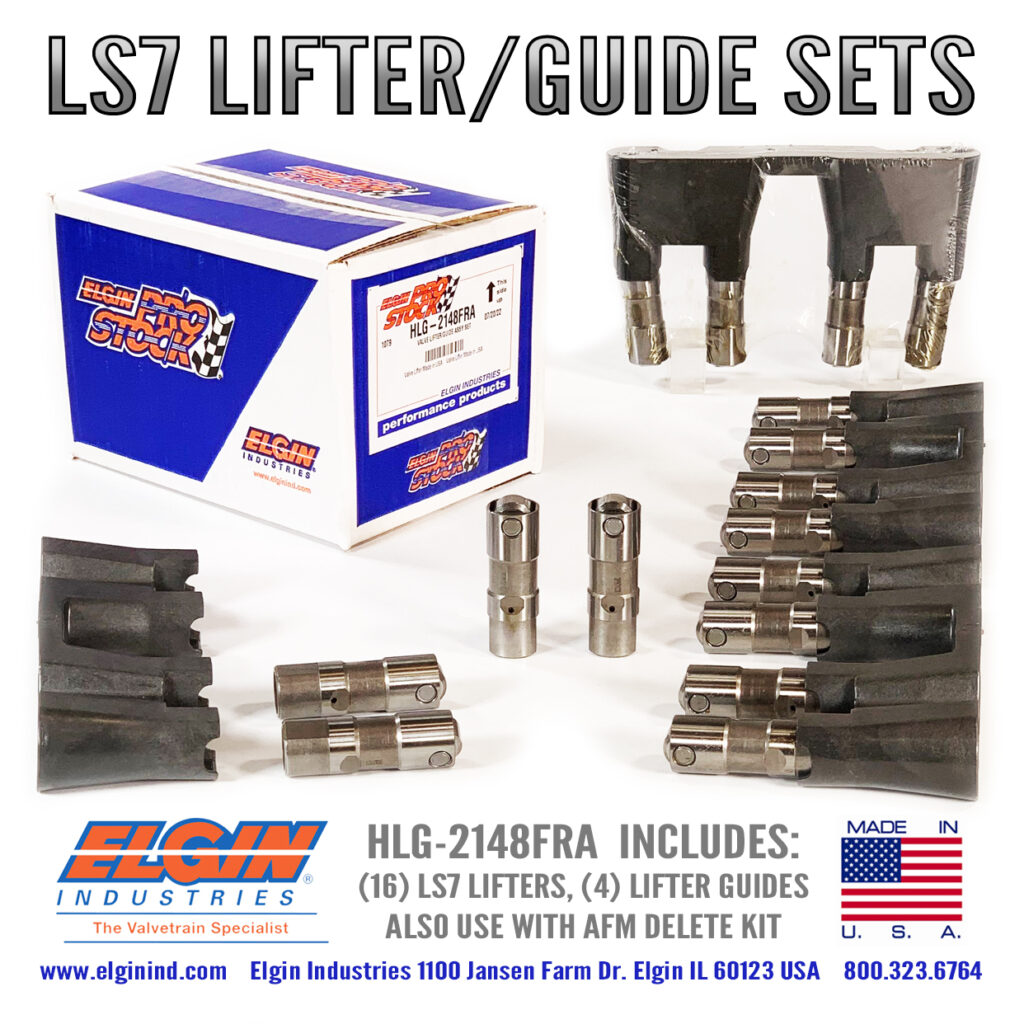
AFM Failure and Delete
Active Fuel Management systems that are 10 years old and corroded are susceptible to damage caused by electrical computer control system failures. The new DFM lifters, Elgin HL-7025, have revised designs that can be used in older AFM applications.
The lifter guides themselves will fatigue over time and are another cause for lifter failure. This is especially true for counterfeit made-in-china parts.
Elgin LS lifters and lifter guides are all made here in the USA to meet or exceed OE specifications!
Performance Lifter Lash
Stock LS rocker arms have been proven to handle 7000 rpm, and many engine builders are choosing to retain them, while upgrading valve springs & retainers, and push rods.
Performance camshafts with steeper ramp profiles may require more lifter pre-load lash than stock. Since the stock rocker arms are non-adjustable, lash must be changed with a different push rods length.
Elgin’s LS7 style lifter is HL-2148, made in USA, available in sets with the lifter guides for AFM delete:
- .050″ stock lash
- .070″-.100″ performance
- .120″-.150″ total travel
Elgin offers pushrods in .025″ increments to compensate for changes in valve train geometry. Anytime you change head gasket thickness, deck the block, mill the cylinder heads, swap to full roller rockers, you should re-measure pushrod length.
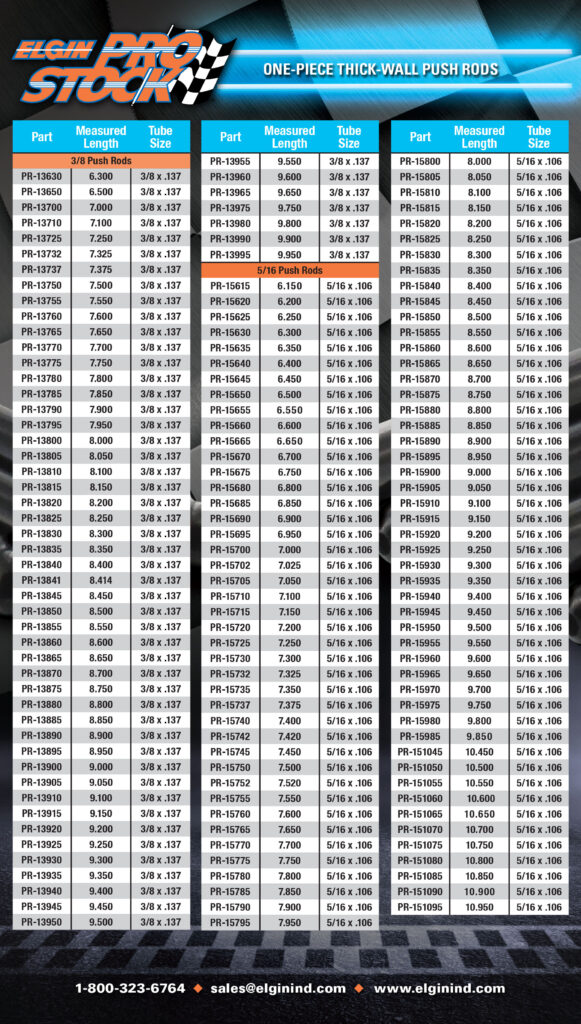
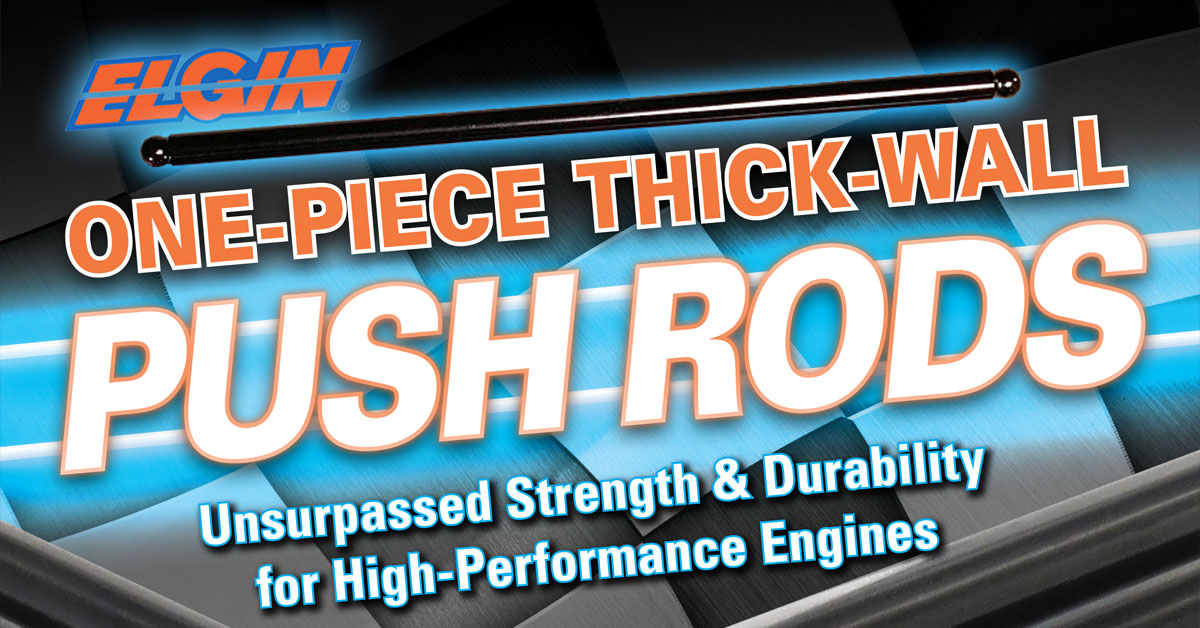
One-piece, thick-wall, chrome moly pushrods are centerless ground, with 210′ turned ends. These are the best pushrods for any application.
For more information, or to be connected with an Elgin distributor, please feel free to contact us!
